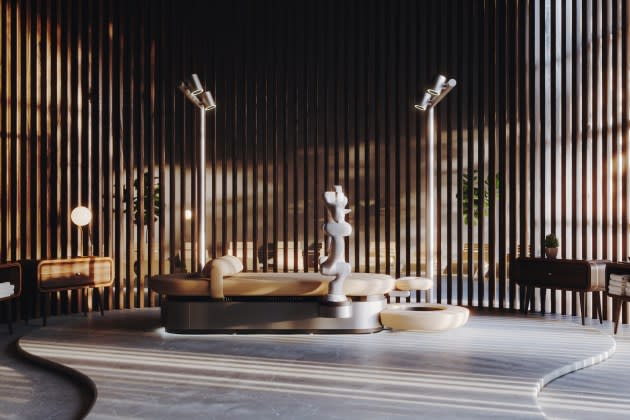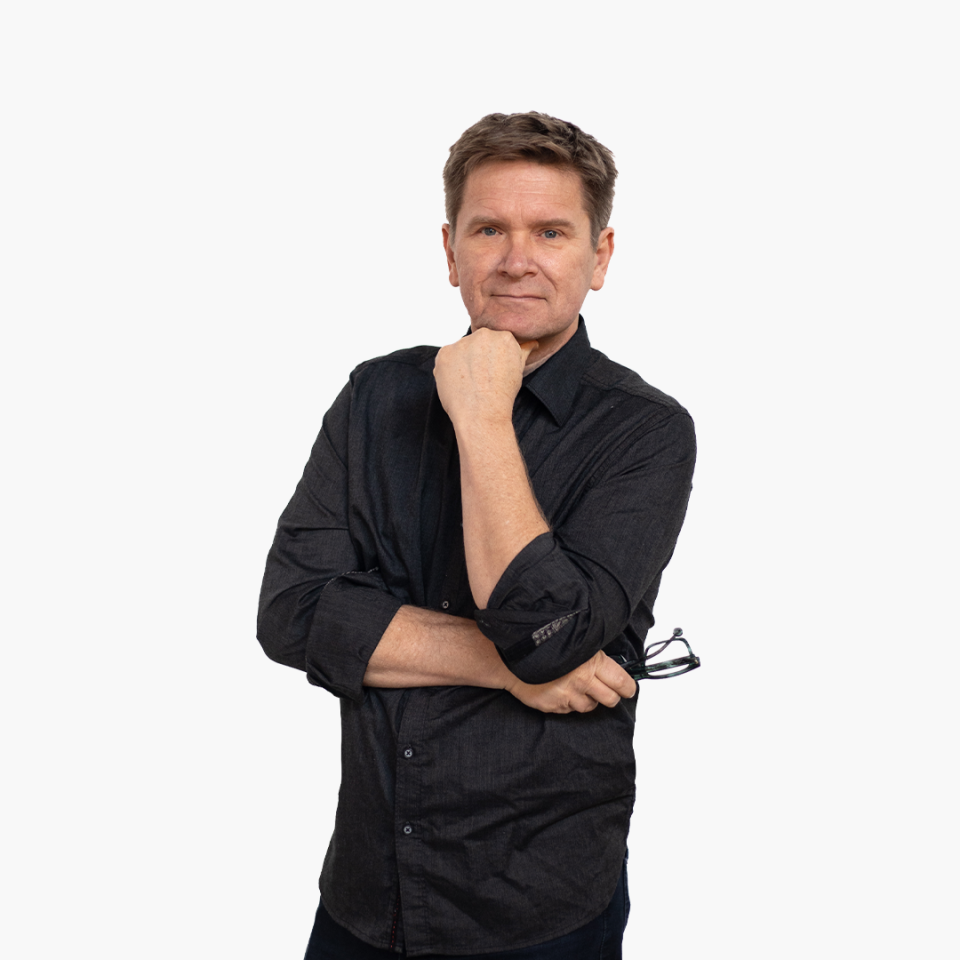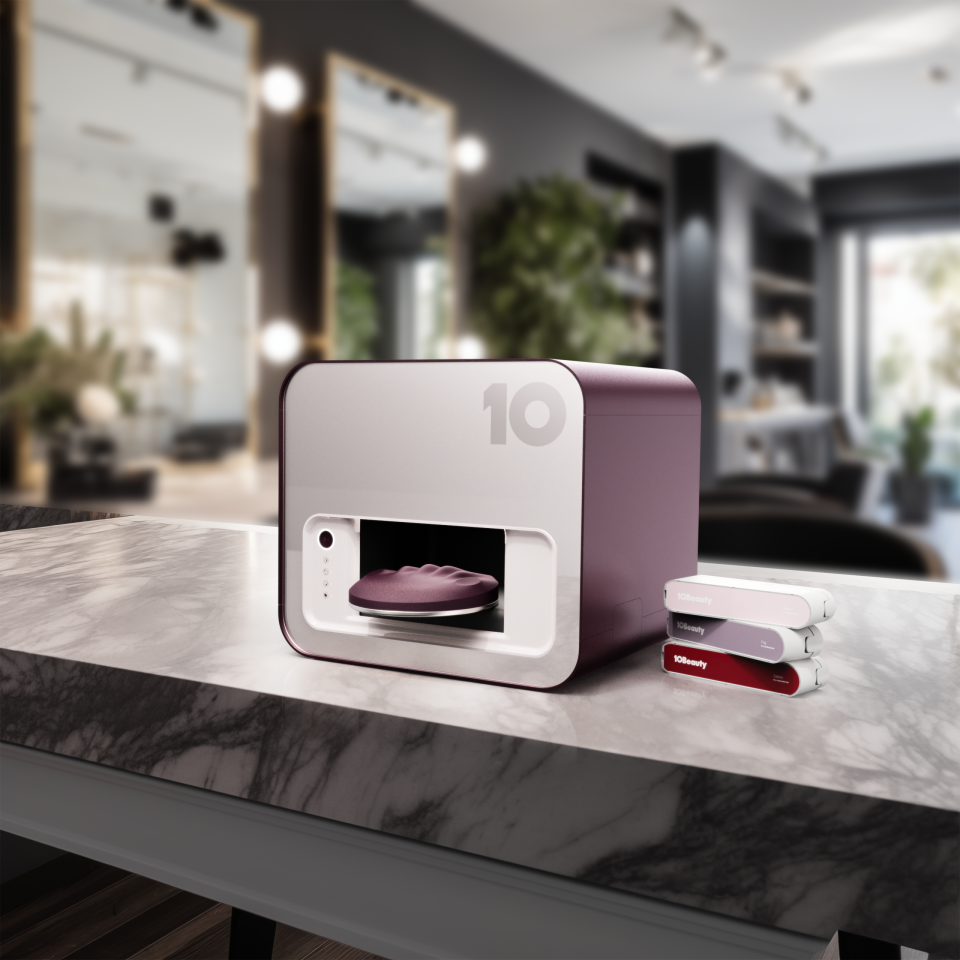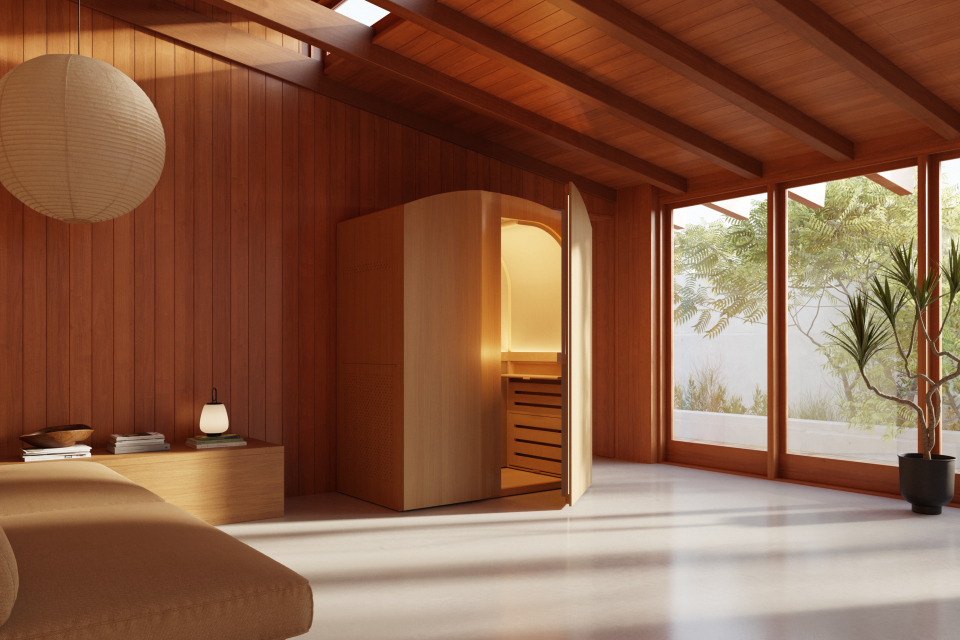Product Design Firm Whipsaw Lends Its Award-winning Prowess to the Wellness Space

What do Uber, Tonal, Google, Dell and Nike all have in common? They all worked with one of the leaders in the product design space — industrial and experience design consulting firm Whipsaw — to create innovative products.
Dan Harden is the chief executive officer, founder and principal designer of Whipsaw, which he created in 1999. Previously, as the president of Frogdesign, Harden worked alongside industry heavyweights including Steve Jobs, Larry Ellison and Rupert Murdoch to create notable products.
More from WWD
AI's Role in Overcoming Post-pandemic Supply Chain Challenges
Alo Brings Its Studio to Street Style to an Exclusive Partnership Launch with Beats
Over 20 years, Harden has brought more than 1,000 products to market, received more than 500 patents and his notable contributions to design and innovation can be seen in the more than 300 design awards he’s won, including 41 IDEA Awards. His work has been featured in the Cooper Hewitt Museum, Henry Ford Museum, Chicago Athenaeum and Pasadena Museum of California Art.
Harden has been at the forefront of innovation in product design for more than two decades, combining his passion and experiences, while leading his practice with his philosophies on art, culture, psychology and technology. His company has brought to market countless products within the luxury wellness space, including Ancient Ritual’s Arc Experiential Sauna, Aescape’s Fully Automated Massage Experience and 10Beauty’s Robotic Manicure Machine.
“Design aims to deliver satisfaction and goodness on some level,” Harden told WWD. “Sometimes, it is a clever little innovation that eases your particular difficulty, sometimes it’s a grand new way to solve a systemic problem. Or sometimes, it’s a poetic object or interface that makes you smile. With all the stuff out there, you begin questioning what satisfaction and goodness even means to people. The thoughtfulness, compassion and empathy that designers instinctively feel and create as ‘artists and craftspeople’ is precisely what the world needs more of right now.”
Here, Harden talks to WWD about his approach to designing new products, the company’s commitment to sustainability, incorporating cutting-edge technology, his thoughts on artificial intelligence taking over, the growth of the wellness market and more.

WWD: With an impressive portfolio of innovative products at Whipsaw, what is your process of identifying new potential design products?
Dan Harden: We mostly look for meaning. Is there a potential to help people with this product, or help the planet? Is there a cultural benefit? Considering how much stuff is out there already, is the envisioned product worthy of even existing? We also look for exciting opportunities for us to stretch our minds and do new kinds of design in diverse industries. Finally, we try to determine if the client is passionate about their cause and if they are truly open to deep innovation because it takes guts to do good design and commitment to develop it.
WWD: With a commitment to sustainability in design, how does this shape your company’s approach to new projects?
D.H.: In a perfect world, every project would have an opportunity to solve a sustainability problem. However, there is a wide spectrum of design-for-sustainability projects. Sometimes you have little room to promote sustainability — like on a disposable medical device — and sometimes you have a chance to solve a variety of sustainability concerns. When we get those, we lean in. Sustainability is more than designing for conservation, recycling and minimal energy consumption. To make a difference, you must go deeper.
Sustainability is a mindset that we need to get consumers and corporations to understand better if we expect them to embrace it and take part in it. Design can play a part in this because at its core design is a communication tool. Products can include direct and subliminal messaging about their eco features and why they’re important. You also need to imbue your design with timeless qualities, even emotional connection, so it encourages lifetime use. Your favorite things, whether a watch, bag or favorite pair of jeans have that good sustainability trait. Tech is harder because it obsoletes so fast.
Designers need to pressure technologists and engineers to continue the conservation-minded reductionist trend. We do this by making sure that “less being more” is a desirable trait to consumers. We make sure that sleek slim minimal tech remains cool. Then, make it easy to take apart to repurpose or recycle. It’s many small things like this that design can do to collectively make a difference.

WWD: How do you see the future of product design evolving over the next five to 10 years and how is Whipsaw preparing for these changes?
D.H.: It’s a good time to be a designer now and in the foreseeable future. In the last decade, design as a practice and as a way of thinking has undergone a renaissance. It now includes practically everything — the design of the product, the experience, the service, the business and even designing your life. As a result, more women and people of color have entered the field.
Designers have finally earned a seat at the big table, just in time to help with the big problems of our present and future; and there are huge problems. Capitalism as an economic construct is waning. Consumerism has become our modern-day culture. The environment is being destroyed for the sake of wealth. Designers will be called upon more in the future to help with this big stuff as they possess the twin skills of seeing large patterns and the ability to creatively see their way through the fog. The right brain sensitivity that designers also possess will become more valuable in a world that yearns for positive change. Empathic design is exactly what the world needs most.
Generative AI is all the talk in design, and it will have a profound impact on the future. Presently we look at it as a tool like CAD or 3D printing, but soon enough it will be doing very advanced design work, which will no doubt replace jobs. No one can really say what its actual impact will be, or what its true promise is. Half of the designers I talk to are excited about it and half hate it.
I’m always an optimist but AI applied to design makes me sad. Design is one of the last vestiges of soulful work. It is art, passion, inspiration, wonder and grit all rolled into one. Even though generative AI is a shimmering new technology that feels close to magic, it also feels detached. Designing is an endeavor that makes you glad to be alive.
As AI develops, designers must fight to keep human design values alive in whatever form AI takes. They must be a part of the software dev teams to ensure that the creative process is augmented by AI, not overtaken by it. In the meantime, we’ll keep experimenting with it for discovery’s sake. It’s the only option if you want to stay ahead of it.
WWD: What are some challenges you faced and how have you successfully navigated them?
D.H.: There’s the work itself, which by nature is almost always challenging. And then there’s the business of design, which is challenging too, especially considering how many stakeholders must rally to make good innovation happen.
Challenge and design are natural partners because design is primarily about problem-solving. You start with challenging project requirements and many of those will be conflicting or just plain hard to achieve. For example, if you’re designing a handheld product like a dermatology device, the internal components may be bigger than what you can hold. Or your awesome design concept doesn’t fit the brand or it’s too expensive to manufacture.
Keeping a design vision alive for the duration of a project is hard too since there are many opportunities for it to get sidetracked as more and more requirements are confronted and more money is spent. Balancing design and engineering needs is always a challenge when developing real mass-produced products. Sometimes marketing requirements force you to compromise your hot new design for the sake of a campaign.
It’s like running a gauntlet. If you get through unscathed, you’ve created a design win. The key is to foresee the challenges and not to design in a vacuum. All surrounding disciplines are important to fold into your process. Incorporate their thinking into your solution and it’ll go much smoother.
Projects like our recent Aescape massage system had all the above challenges and more. At the end of the day, you try to make your solution look and feel natural and easy. If your design looks as if it should have always existed, and like an archeologist you “discovered it,” chances are it’s excellent.
The business of design, whether you’re a consultant or in-house designer, is challenging too especially because your focus is creativity. Your customer often doesn’t understand creative problem-solving, which can be nebulous, nonlinear and abstract. You need to figure out how to articulate your visual language in their terms, which are more verbal and linear — then be very persuasive.
Getting your client to do the right thing for the sake of sustainability quality, or development time reasons, is always challenging. Overcoming challenges is one of the things that makes design so worth doing. When you finally see your creation on the market after years of sweating it out, there’s no better rush.

WWD: What’s the role of technology and digital tools in Whipsaw’s design process and how does that impact the final result and product?
D.H.: Tech has a massive impact on our practice, both in terms of the way that we work (CAD, software, prototyping, collaboration tools, etc.) and the work product itself. Much of our work is technology-based based whether it’s cutting-edge consumer electronics, scientific, robotics or medical equipment.
We are often tasked with defining the identity of a new piece of tech from scratch, defining how it will be used and strategizing how it will be developed and ultimately productized. Often, technology itself feels magic. We try to celebrate that magic in the actual design whenever we can, without sacrificing the end user’s ability to understand it or appreciate it. Technology is often pretty abstract, so it’s up to us to give it expression and personality. I’ve always loved giving representation to technology.
WWD: How does Whipsaw balance functionality and aesthetics in product design? What’s an example of a product that achieves this balance?
D.H.: When asked to describe Whipsaw in 10 words, I would say, “A two-handle whipsaw epitomizes balance and cuts like hell.” I named the company Whipsaw to symbolize the balance of form and function, art and science and healthy collaboration which is always a reciprocal back and forth motion.
There is always a balance between form and function in every project. Function is critical to establish early in a project because without function your product won’t sell unless it’s a decorative art piece or pure fashion. Function is the foundation of most design projects. It’s about identifying objective facts — the dimensional constraints, technology limitations, mechanisms, ergonomic realities, etc. Sometimes you just need to celebrate the function in its appearance to make a good design and other times the function can be subdued in favor of an aesthetic statement that appeals more to emotion.
The conventional saying goes, “Form follows function,” which is usually the case, but there’s more. Often form and function should follow experience — and sometimes all three should follow brand. This is true with luxury beauty products where brand design is the absolute priority. On the other hand, if you’re designing a surgical product, function and the usage experience drive all design decisions. Sustainability factors also need to be considered.
The old binary seesaw maxim of form and function has now become more complex, perhaps more like balancing a plate. As a designer, your job is to figure out all these primacies and design accordingly. The priorities you choose should be evident in your design, and everything should hang together as a complete composition. We live and love this stuff, so our “plate compositions” are usually pretty complete. Look at our Tonal, Aescape, Ancient Ritual and Ravenchord designs. You might say, those seem right and balanced — works well, easy to use, attractive, sustainable and branded.
WWD: How do you see the future of the luxury wellness market growing currently and into the next five to 10 years?
D.H.: We enjoy designing for the luxury wellness market because design plays such a big role in it. Wellness products require flawless human factors because they are touched, held, laid on, manipulated and more. There is also a tangible and immediate benefit for the end user. They want to look good and feel good. The design not only enables this desire but also amplifies a positive personal outlook. Design psychology, beauty, nuance, thoughtfulness and fulfillment are always top criteria when designing wellness products.
The luxury wellness market is growing now due to aging demographics and a higher awareness of all things health and technology. The pandemic helped too as it reminded people that quality-of-life and general wellness are keys to happiness. People are reevaluating what makes them happy, healthy, secure, comfortable and content.
These trends will be relevant for years to come but the biggest growth driver in the long term will be surrounding technology. Advancements in precision medicine and treatment, based on personal genetics, sensor data and AI will drive the wellness market well into the future. There will be wellness offerings for every need, and many will be tailored just for you. For these innovations to take hold and thrive they need equal parts utility and usability, which are the very tenets of good industrial design and interaction design.
Best of WWD


